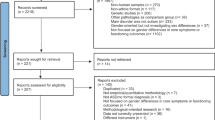Abstract
Autism spectrum disorder (ASD) has become one of the most areas of research in present decade. Previous research works have focused on varied approaches to handle Autism spectrum disorder. However, significance of the existing approaches could still be improved. The efficiency and accuracy of ASD prediction can be improved via building classification systems using artificial intelligence mechanisms like machine learning. This paper addresses this issue by designing an expert system to evaluate autism under uncertainty. An improved adaptive neuro fuzzy interference system (IANFIS) approach has been employed to develop an autism detection model for detecting ASD in individuals of all ages. The advantage of IANFIS is to give the highest classification and the lowest error rates when compared to other existing classifiers. Here the Particle Swarm Optimization (PSO) method is proposed for identifying and choosing the most important ASD feature subset. Its performance was evaluated with ISAA dataset, which comprises of data from individuals with and without autistic attributes. Experimental outcomes revealed that the proposed ASD detection model generates better outcomes in terms of sensitivity, accuracy, precision and specificity.









Similar content being viewed by others
Change history
07 June 2022
This article has been retracted. Please see the Retraction Notice for more detail: https://doi.org/10.1007/s12652-022-04053-y
References
Altay O, Ulas M (2018) Prediction of the autism spectrum disorder diagnosis with linear discriminant analysis classifier and K-nearest neighbor in children. In: International symposium on digital forensic and security (ISDFS), pp 1–4.
Bone D, Bishop S, Black MP, Goodwin MS, Lord C, Narayanan SS (2016) Use of machine learning to improve autism screening and diagnostic instruments: effectiveness, efficiency, and multi-instrument fusion. J Child Psychol Psychiatry 57(8):927–937
Büyükoflaz, FN, Öztürk A (2018) Early autism diagnosis of children with machine learning algorithms. In: Signal processing and communications Aapplications conference (SIU), pp 1–4.
Chakraborty S, Thomas P, Bhatia T, Nimgaonkar VL, Deshpande SN (2015) Assessment of severity of autism using the Indian scale for assessment of autism. Indian J Psychol Med 37(2):169–174
Dutta SR, Datta S, Roy M (2019) Using cogency and machine learning for autism detection from a preliminary symptom. In: International conference on cloud computing, data science and engineering (confluence), pp 331–336.
Heinsfeld AS, Franco AR, Craddock RC, Buchweitz A, Meneguzzi F (2018) Identification of autism spectrum disorder using deep learning and the ABIDE dataset. NeuroImage Clin 17:16–23
Hyde KK, Novack MN, LaHaye N, Parlett-Pelleriti C, Anden R, Dixon DR, Linstead E (2019) Applications of supervised machine learning in autism spectrum disorder research: a review. Rev J Autism Dev Disord 6(2):128–146
Jain R, Juneja M, Sairam S (2013) Children with developmental disabilities in India: age of initial concern and referral for rehabilitation services, and reasons for delay in referral. J Child Neurol 28(4):455–460
Kommu JVS, Gayathri KR, Srinath S, Girimaji SC, Seshadri SP, Gopalakrishna G (2017) Profile of two hundred children with autism spectrum disorder from a tertiary child and adolescent psychiatry centre. Asian J Psychiatry 28:51–56
Manocha A, Singh R (2019) An intelligent monitoring system for indoor safety of individuals suffering from autism spectrum disorder (ASD). J Ambient Intell Human Comput. https://doi.org/10.1007/s12652-019-01277-3
Omar, KS, Mondal P, Khan NS, Rizvi MRK, Islam MN (2019) A machine learning approach to predict autism spectrum disorder. In: IEEE International conference on electrical, computer and communication engineering (ECCE), pp 1–6.
Reddy P, Reddy VV, Manohar TG (2017) Ant lion optimization algorithm for optimal sizing of renewable. Electr Power Energy Syst 28:669–678
Rudra A, Banerjee S, Singhal N, Barua M, Mukerji S, Chakrabarti B (2014) Translation and usability of autism screening and diagnostic tools for autism spectrum conditions in India. Autism Res 7(5):598–607
Sharma A, Khosla A, Khosla M, Rao Y (2018) Fast and accurate diagnosis of autism (FADA): a novel hierarchical fuzzy system based autism detection tool. Australas Phys Eng Sci Med 41(3):757–772
Sivasangari A, Ajitha P, Rajkumar I, Poonguzhali S (2019) Emotion recognition system for autism disordered people. J Ambient Intell Human Comput. https://doi.org/10.1007/s12652-019-01492-y
Thomas martial EE, Hu L, Yuqing S (2019) Characterising and predicting autism spectrum disorder by performing resting-state functional network community pattern analysis. Front Hum Neurosci 13(203):1–17
Xue B, Zhang M, Browne WN (2012) Particle swarm optimization for feature selection in classification: a multi-objective approach. IEEE Trans Cybern 43(6):1656–1671
Xue B, Zhang M, Browne WN (2014) Particle swarm optimisation for feature selection in classification: novel initialisation and updating mechanisms. Appl Soft Comput 18:261–276
Yuan J, Holtz C, Smith T (2016) Spectrum disorder detection from semi-structured and unstructured medical data. EURASIP J Bioinf Syst Biol 2017(1):1–9
Author information
Authors and Affiliations
Corresponding author
Additional information
Publisher's Note
Springer Nature remains neutral with regard to jurisdictional claims in published maps and institutional affiliations.
This article has been retracted. Please see the retraction notice for more detail:https://doi.org/10.1007/s12652-022-04053-y
About this article
Cite this article
Pavithra, D., Jayanthi, A.N. RETRACTED ARTICLE: An improved adaptive neuro fuzzy interference system for the detection of autism spectrum disorder. J Ambient Intell Human Comput 12, 6885–6897 (2021). https://doi.org/10.1007/s12652-020-02332-0
Received:
Accepted:
Published:
Issue Date:
DOI: https://doi.org/10.1007/s12652-020-02332-0




